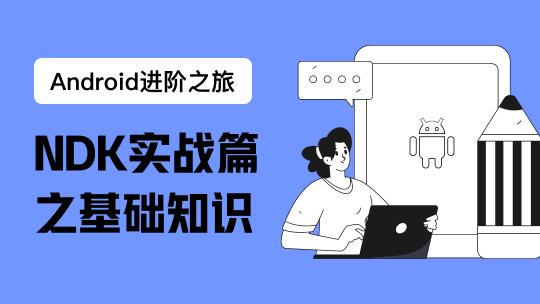1. Spring有哪些优点?
轻量级:Spring在大小和透明性方面绝对属于轻量级的,基础版本的Spring框架大约只有2MB。
控制反转(IOC):Spring使用控制反转技术实现了松耦合。依赖被注入到对象,而不是创建或寻找依赖对象。
面向切面编程(AOP): Spring支持面向切面编程,同时把应用的业务逻辑与系统的服务分离开来。
容器:Spring包含并管理应用程序对象的配置及生命周期。
MVC框架:Spring的web框架是一个设计优良的web MVC框架,很好的取代了一些web框架。
事务管理:Spring对下至本地业务上至全局业务(JAT)提供了统一的事务管理接口。
异常处理:Spring提供一个方便的API将特定技术的异常(由JDBC, Hibernate, 或JDO抛出)转化为一致的、Unchecked异常。
2. Spring框架的基本模块如下所示:
Core module, Bean module, Context module, Expression Language module, JDBC module, ORM module, OXM module
Java Messaging Service(JMS) module, Transaction module, Web module, Web-Servlet module, Web-Struts module, Web-Portlet module
3. Spring IoC容器是什么?
Spring IOC负责创建对象、管理对象(通过依赖注入)、整合对象、配置对象以及管理这些对象的生命周期。
4. Bean Factory和ApplicationContext有什么区别?
ApplicationContext提供了一种解决文档信息的方法,一种加载文件资源的方式(如图片),他们可以向监听他们的beans发送消息。另外,容器或者容器中beans的操作,这些必须以bean工厂的编程方式处理的操作可以在应用上下文中以声明的方式处理。应用上下文实现了MessageSource,该接口用于获取本地消息,实际的实现是可选的。
5. Spring中的依赖注入是什么?有哪些不同类型的IOC?区别是什么?
依赖注入作为控制反转(IOC)的一个层面,可以有多种解释方式。在这个概念中,你不用创建对象而只需要描述如何创建它们。你不必通过代码直接的将组件和服务连接在一起,而是通过配置文件说明哪些组件需要什么服务。之后IOC容器负责衔接。
构造器依赖注入:构造器依赖注入在容器触发构造器的时候完成,该构造器一系列的参数,每个参数代表注入的对象。
Setter方法依赖注入:首先容器会触发一个无参构造函数或无参静态工厂方法实例化对象,之后容器调用bean中的setter方法完成Setter方法依赖注入。
你可以同时使用两种方式的依赖注入,最好的选择是使用构造器参数实现强制依赖注入,使用setter方法实现可选的依赖关系。
(1) 构造器注入示例:
public class AccountServiceImpl implements AccountService{
private AccountDao accountDao; //需要注入的对象Dao层对象
/**
* 构造注入
* @param accountDao
*/
public AccountServiceImpl(AccountDao accountDao){
this.accountDao=accountDao;
}
//........
}
}
xml配置如下:
<bean name="accountDao" class="com.zejian.spring.springIoc.dao.impl.AccountDaoImpl"/>
<!-- 通过构造注入依赖 -->
<bean name="accountService" class="com.zejian.spring.springIoc.service.impl.AccountServiceImpl">
<!-- 构造方法方式注入accountDao对象,-->
<constructor-arg ref="accountDao"/>
</bean>
(2) setter方法注入:
Setter注入顾名思义,被注入的属性需要有set方法, Setter注入支持简单类型和引用类型,Setter注入时在bean实例创建完成后执行的。直接观察前面的案例,对象注入使用<property>的ref属性。
<!-- setter通过property 注入属性值,普通类型使用value -->
<bean id="account" scope="prototype" class="com.zejian.spring.springIoc.pojo.Account" >
<property name="name" value="I am SpringIOC1" />
<property name="pwd" value="123" />
<!-- 注入map -->
<property name="books">
<map>
<entry key="10" value="CoreJava">
</entry>
<entry key="11" value="JavaWeb">
</entry>
<entry key="12" value="SSH2">
</entry>
</map>
</property>
<!-- 注入set -->
<property name="friends">
<set>
<value>张龙</value>
<value>老王</value>
<value>王五</value>
</set>
</property>
<!-- 注入list -->
<property name="citys">
<list>
<value>北京</value>
<value>上海</value>
<value>深圳</value>
<value>广州</value>
</list>
</property>
</bean>
6. Spring应用程序看起来像什么?
1)一个定义功能的接口
2)实现包括属性,setter和getter方法,功能等
3)Spring AOP
4)Spring的XML配置文件
5)使用该功能的客户端编程
7. 什么是Spring Beans?它定义了什么内容?
Spring Beans是构成Spring应用核心的Java对象。这些对象由Spring IOC容器实例化、组装、管理。这些对象通过容器中配置的元数据创建,例如,使用XML文件中定义的创建。
在Spring中创建的beans都是单例的beans。在bean标签中有一个属性为”singleton”,如果设为true,该bean是单例的,如果设为false,该bean是原型bean。Singleton属性默认设置为true。因此,spring框架中所有的bean都默认为单例bean。
Spring Bean中定义了所有的配置元数据,这些配置信息告知容器如何创建它,它的生命周期是什么以及它的依赖关系。
8.如何向Spring 容器提供配置元数据?
三种方式向Spring 容器提供元数据:
XML配置文件
基于注解配置
基于Java的配置
9. 如何定义bean的作用域?Spring中支持的bean作用域有哪几种?
在bean定义的时候通过’scope’属性定义即可。
例如,当Spring需要产生每次一个新的bean实例时,应该声明bean的scope属性为prototype。如果每次你希望Spring返回一个实例,应该声明bean的scope属性为singleton。
Spring框架支持如下五种不同的作用域:
singleton:在Spring IOC容器中仅存在一个Bean实例,Bean以单实例的方式存在。
prototype:一个bean可以定义多个实例。
request:每次HTTP请求都会创建一个新的Bean。该作用域仅适用于WebApplicationContext环境。
session:一个HTTP Session定义一个Bean。该作用域仅适用于WebApplicationContext环境.
globalSession:同一个全局HTTP Session定义一个Bean。该作用域同样仅适用于WebApplicationContext环境.
bean默认的scope属性是’singleton‘。
10. 解释Spring框架中bean的生命周期
Spring容器读取XML文件中bean的定义并实例化bean。Spring根据bean的定义设置属性值。实例化一个Bean,也就是我们通常说的new一个对象实例,
1)按照Spring上下文对实例化的Bean进行配置,也就是IOC注入;
2)如果这个Bean实现了BeanNameAware接口,会调用它实现的setBeanName(String beanId)方法,此处传递的是Spring配置文件中Bean的ID
3)如果这个Bean实现了BeanFactoryAware接口,会调用它实现的setBeanFactory(),传递的是Spring工厂本身(可以用这个方法获取到其他Bean)
4)如果这个Bean实现了ApplicationContextAware接口,会调用setApplicationContext(ApplicationContext)方法,传入Spring上下文,该方式同样可以实现步骤4,但比4更好,以为ApplicationContext是BeanFactory的子接口,有更多的实现方法
5)如果这个Bean关联了BeanPostProcessor接口,将会调用postProcessBeforeInitialization(Object obj, String s)方法,BeanPostProcessor经常被用作是Bean内容的更改,并且由于这个是在Bean初始化结束时调用After方法,也可用于内存或缓存技术
6)如果这个Bean在Spring配置文件中配置了init-method属性会自动调用其配置的初始化方法
7)如果这个Bean关联了BeanPostProcessor接口,将会调用postAfterInitialization(Object obj, String s)方法
注意:以上工作完成以后就可以用这个Bean了,那这个Bean是一个single的,所以一般情况下我们调用同一个ID的Bean会是在内容地址相同的实例
8)当Bean不再需要时,会经过清理阶段,如果Bean实现了DisposableBean接口,会调用其实现的destroy方法
9)最后,如果这个Bean的Spring配置中配置了destroy-method属性,会自动调用其配置的销毁方法。
11. 什么是bean自动装配?自动装配有哪几种模式?
Spring容器可以自动配置相互协作beans之间的关联关系。这意味着Spring可以自动配置一个bean和其他协作bean之间的关系,通过检查BeanFactory 的内容里没有使用和< property>元素。
自动装配提供五种不同的模式供Spring容器用来自动装配beans之间的依赖注入:
1)no:默认的方式是不进行自动装配,通过手工设置ref 属性来进行装配bean。
2)byName:通过参数名自动装配,Spring容器查找beans的属性,这些beans在XML配置文件中被设置为byName。之后容器试图匹配、装配和该bean的属性具有相同名字的bean。
3)byType:通过参数的数据类型自动自动装配,Spring容器查找beans的属性,这些beans在XML配置文件中被设置为byType。之后容器试图匹配和装配和该bean的属性类型一样的bean。如果有多个bean符合条件,则抛出错误。
4)constructor:这个同byType类似,不过是应用于构造函数的参数。如果在BeanFactory中不是恰好有一个bean与构造函数参数相同类型,则抛出一个严重的错误。
5)autodetect:如果默认的构造方法,通过 construct的方式自动装配,否则使用 byType的方式自动装配。
自动装配如下局限性:
重写:你仍然需要使用 和< property>设置指明依赖,这意味着总要重写自动装配。
原生数据类型:你不能自动装配简单的属性,如原生类型、字符串和类。
模糊特性:自动装配总是没自定义装配精确,因此,如果可能尽量使用自定义装配。
12. Spring支持的事务管理类型有哪些?优点是什么?
Spring支持如下两种方式的事务管理:
1)编程式事务管理:这意味着你可以通过编程的方式管理事务,这种方式带来了很大的灵活性,但很难维护。
2)声明式事务管理:这种方式意味着你可以将事务管理和业务代码分离。你只需要通过注解或者XML配置管理事务。
有如下优点:
1)它为不同的事务API(如JTA, JDBC, Hibernate, JPA, 和JDO)提供了统一的编程模型。
2)它为编程式事务管理提供了一个简单的API而非一系列复杂的事务API(如JTA).
3)它支持声明式事务管理。
4)它可以和Spring 的多种数据访问技术很好的融合。
两种事务管理类型区别:
编程式事务允许用户在代码中精确定义事务的边界,而声明式事务(基于AOP)有助于用户将操作与事务规则进行解耦。
简单地说,编程式事务侵入到了业务代码里面,但是提供了更加详细的事务管理;而声明式事务由于基于AOP,所以既能起到事务管理的作用,又可以不影响业务代码的具体实现。
13. 什么是Spring的AOP?
AOP即面向切面编程, 它允许程序员模块化横向业务逻辑,或定义核心部分的功能,例如日志管理和事务管理。
(切面:一种新的模块化机制,用来描述分散在对象、类或方法中的横切关注点)
(横切关注: 是会影响到整个应用程序的关注功能,它跟正常的业务逻辑是正交的,没有必然的联系,但是几乎所有的业务逻辑都会涉及到这些关注功能。通常,事务、日志、安全性等关注就是应用中的横切关注功能。)
14. 在Spring AOP中concern和 cross-cutting concern的区别是什么?
Concern(核心逻辑):表示在应用程序中一个模块的行为。Concern可以定义为我们想要实现的功能。
Cross-cutting concern(横向的通用逻辑):指的是整个应用程序都会用到的功能,它影响整个应用程序。例如,日志管理(Logging)、安全管理(Security)以及数据交互是应用程序的每个模块都要涉及到的,因此这些都属于Cross-cutting concern。
15. Spring切面有几种类型的通知?
1)before(前置通知):在一个方法之前执行的通知。
2)after(最终通知):当某连接点退出的时候执行的通知(不论是正常返回还是异常退出)。
3)after-returning(后置通知):在某连接点正常完成后执行的通知。
4)after-throwing(异常通知):在方法抛出异常退出时执行的通知。
5)around(环绕通知):在方法调用前后触发的通知。
16. 什么是代理?有几种不同类型的自动代理?
代理是将通知应用到目标对象后创建的对象。从客户端的角度看,代理对象和目标对象是一样的。
代理有如下几种:
1)BeanNameAutoProxyCreator:bean名称自动代理创建器
2)DefaultAdvisorAutoProxyCreator:默认通知者自动代理创建器
3)Metadata autoproxying:元数据自动代理
17. 什么是织入?
织入是将切面和其他应用类型或对象连接起来创建一个通知对象的过程。织入可以在编译、加载或运行时完成。
18. 什么是IoC和DI?DI是如何实现的?
IoC叫控制反转,是Inversion of Control的缩写,DI(Dependency Injection)叫依赖注入,是对IoC更简单的诠释。
控制反转是把传统上由程序代码直接操控的对象的调用权交给容器,通过容器来实现对象组件的装配和管理。所谓的”控制反转”就是对组件对象控制权的转移,从程序代码本身转移到了外部容器,由容器来创建对象并管理对象之间的依赖关系。IoC体现了好莱坞原则 – “Don’t call me, we will call you”。
依赖注入的基本原则是应用组件不应该负责查找资源或者其他依赖的协作对象。配置对象的工作应该由容器负责,查找资源的逻辑应该从应用组件的代码中抽取出来,交给容器来完成。DI是对IoC更准确的描述,即组件之间的依赖关系由容器在运行期决定,形象的来说,即由容器动态的将某种依赖关系注入到组件之中。
依赖注入可以通过setter方法注入(设值注入)、构造器注入和接口注入三种方式来实现,Spring支持setter注入和构造器注入,通常使用构造器注入来注入必须的依赖关系,对于可选的依赖关系,则setter注入是更好的选择,setter注入需要类提供无参构造器或者无参的静态工厂方法来创建对象。
19. 依赖注入时如何注入集合属性?
答:可以在定义Bean属性时,通过 /
20. Spring中的自动装配有哪些限制?
1)如果使用了构造器注入或者setter注入,那么将覆盖自动装配的依赖关系。
2)基本数据类型的值、字符串字面量、类字面量无法使用自动装配来注入。
3)优先考虑使用显式的装配来进行更精确的依赖注入而不是使用自动装配。
21. Spring的启动过程:
(1)对于一个web应用,其部署在web容器中,web容器提供其一个全局的上下文环境,这个上下文就是ServletContext,其为后面的spring IoC容器提供宿主环境;
(2)在web.xml中会提供有contextLoaderListener。在web容器启动时,会触发容器初始化事件,此时contextLoaderListener会监听到这个事件,其contextInitialized方法会被调用,在这个方法中,spring会初始化一个启动上下文,这个上下文被称为根上下文,即WebApplicationContext,这是一个接口类,确切的说,其实际的实现类是XmlWebApplicationContext。这个就是spring的IoC容器,其对应的Bean定义的配置由web.xml中的context-param标签指定。
在这个IoC容器初始化完毕后,spring以WebApplicationContext.ROOTWEBAPPLICATIONCONTEXTATTRIBUTE为属性Key,将其存储到ServletContext中,便于获取;
(3)contextLoaderListener监听器初始化完毕后,开始初始化web.xml中配置的Servlet,这个servlet可以配置多个,以最常见的DispatcherServlet为例,这个servlet实际上是一个标准的前端控制器,用以转发、匹配、处理每个servlet请求。
DispatcherServlet上下文在初始化的时候会建立自己的IoC上下文,用以持有spring mvc相关的bean。在建立DispatcherServlet自己的IoC上下文时,会利用WebApplicationContext.ROOTWEBAPPLICATIONCONTEXTATTRIBUTE先从ServletContext中获取之前的根上下文(即WebApplicationContext)作为自己上下文的parent上下文。有了这个parent上下文之后,再初始化自己持有的上下文。大概的工作就是初始化处理器映射、视图解析等。这个servlet自己持有的上下文默认实现类也是XmlWebApplicationContext。
(4)初始化完毕后,spring以与servlet的名字相关(此处不是简单的以servlet名为Key,而是通过一些转换,具体可自行查看源码)的属性为属性Key,也将其存到ServletContext中,以便后续使用。这样每个servlet就持有自己的上下文,即拥有自己独立的bean空间,同时各个servlet共享相同的bean,即根上下文(第2步中初始化的上下文)定义的那些bean。
22. contextLoaderListener监听容器初始化事件时,首先会在ContextLoaderListener中通过
那么,以上两个ApplicationContext的关系是什么,它们的作用作用范围分别是什么,它们的用途分别是什么?
(1)ContextLoaderListener中创建ApplicationContext主要用于整个Web应用程序需要共享的一些组件,比如DAO,数据库的ConnectionFactory等。而由DispatcherServlet创建的ApplicationContext主要用于和该Servlet相关的一些组件,比如Controller、ViewResovler等。对于作用范围而言,在DispatcherServlet中可以引用由ContextLoaderListener所创建的ApplicationContext,而反过来不行。
(2)在Spring的具体实现上,这两个ApplicationContext都是通过ServletContext的setAttribute方法放到ServletContext中的。但是,ContextLoaderListener会先于DispatcherServlet创建ApplicationContext,DispatcherServlet在创建ApplicationContext时会先找到由ContextLoaderListener所创建的ApplicationContext,再将后者的ApplicationContext作为参数传给DispatcherServlet的ApplicationContext的setParent()方法。
(3)当Spring在执行ApplicationContext的getBean时,如果在自己context中找不到对应的bean,则会在父ApplicationContext中去找。这也解释了为什么我们可以在DispatcherServlet中获取到由ContextLoaderListener对应的ApplicationContext中的bean。
23. Spring的事务处理机制?
Spring事务管理器的接口是org.springframework.transaction.PlatformTransactionManager,通过这个接口,Spring为各个平台如JDBC、Hibernate等都提供了对应的事务管理器,具体实现由各平台自己来做。此接口的内容如下:
Public interface PlatformTransactionManager()...{
// 由TransactionDefinition得到TransactionStatus对象
TransactionStatus getTransaction(TransactionDefinition definition) throws TransactionException;
// 提交
Void commit(TransactionStatus status) throws TransactionException;
// 回滚
Void rollback(TransactionStatus status) throws TransactionException;
}
Spring定义了如下七种传播行为:
传播行为
含义
PROPAGATION_REQUIRED
表示当前方法必须运行在事务中。如果当前事务存在,方法将会在该事务中运行。否则,会启动一个新的事务
PROPAGATION_SUPPORTS
表示当前方法不需要事务上下文,但是如果存在当前事务的话,那么该方法会在这个事务中运行
PROPAGATION_MANDATORY
表示该方法必须在事务中运行,如果当前事务不存在,则会抛出一个异常
PROPAGATION_REQUIRED_NEW
表示当前方法必须运行在它自己的事务中。一个新的事务将被启动。如果存在当前事务,在该方法执行期间,当前事务会被挂起。如果使用JTATransactionManager的话,则需要访问TransactionManager
PROPAGATION_NOT_SUPPORTED
表示该方法不应该运行在事务中。如果存在当前事务,在该方法运行期间,当前事务将被挂起。如果使用JTATransactionManager的话,则需要访问TransactionManager
PROPAGATION_NEVER
表示当前方法不应该运行在事务上下文中。如果当前正有一个事务在运行,则会抛出异常
PROPAGATION_NESTED
表示如果当前已经存在一个事务,那么该方法将会在嵌套事务中运行。嵌套的事务可以独立于当前事务进行单独地提交或回滚。如果当前事务不存在,那么其行为与PROPAGATION_REQUIRED一样。注意各厂商对这种传播行为的支持是有所差异的。可以参考资源管理器的文档来确认它们是否支持嵌套事务
24. 如何实现编程式事务?
Spring提供两种方式的编程式事务管理,分别是:使用TransactionTemplate和直接使用PlatformTransactionManager。
(1) 使用TransactionTemplate
采用TransactionTemplate和采用其他Spring模板,如JdbcTempalte和HibernateTemplate是一样的方法。它使用回调方法,把应用程序从处理取得和释放资源中解脱出来。如同其他模板,TransactionTemplate是线程安全的。代码片段:
TransactionTemplate tt = new TransactionTemplate();
Object result = tt.execute(
new TransactionCallback(){
public Object doTransaction(TransactionStatus status){
updateOperation();
return resultOfUpdateOperation();
}
}); // 执行execute方法进行事务管理
使用TransactionCallback()可以返回一个值。如果使用TransactionCallbackWithoutResult则没有返回值。
(2) 使用PlatformTransactionManager
示例代码如下:
DataSourceTransactionManager dataSourceTransactionManager = new DataSourceTransactionManager(); //定义一个某个框架平台的TransactionManager,如JDBC、Hibernate
dataSourceTransactionManager.setDataSource(this.getJdbcTemplate().getDataSource()); // 设置数据源
DefaultTransactionDefinition transDef = new DefaultTransactionDefinition(); // 定义事务属性
transDef.setPropagationBehavior(DefaultTransactionDefinition.PROPAGATION_REQUIRED); // 设置传播行为属性
TransactionStatus status = dataSourceTransactionManager.getTransaction(transDef); // 获得事务状态
try {
// 数据库操作
dataSourceTransactionManager.commit(status);// 提交
} catch (Exception e) {
dataSourceTransactionManager.rollback(status);// 回滚
}
25. 如何实现声明式事务?
根据代理机制的不同,总结了五种Spring事务的配置方式,配置文件如下:
(1)每个Bean都有一个代理
<?xml version="1.0" encoding="UTF-8"?>
<beans xmlns="http://www.springframework.org/schema/beans"
xmlns:xsi="http://www.w3.org/2001/XMLSchema-instance"
xmlns:context="http://www.springframework.org/schema/context"
xmlns:aop="http://www.springframework.org/schema/aop"
xsi:schemaLocation="http://www.springframework.org/schema/beans
http://www.springframework.org/schema/beans/spring-beans-2.5.xsd
http://www.springframework.org/schema/context
http://www.springframework.org/schema/context/spring-context-2.5.xsd
http://www.springframework.org/schema/aop http://www.springframework.org/schema/aop/spring-aop-2.5.xsd">
<bean id="sessionFactory"
class="org.springframework.orm.hibernate3.LocalSessionFactoryBean">
<property name="configLocation" value="classpath:hibernate.cfg.xml" />
<property name="configurationClass" value="org.hibernate.cfg.AnnotationConfiguration" />
</bean>
<!-- 定义事务管理器(声明式的事务) -->
<bean id="transactionManager"
class="org.springframework.orm.hibernate3.HibernateTransactionManager">
<property name="sessionFactory" ref="sessionFactory" />
</bean>
<!-- 配置DAO -->
<bean id="userDaoTarget" class="com.bluesky.spring.dao.UserDaoImpl">
<property name="sessionFactory" ref="sessionFactory" />
</bean>
<bean id="userDao" class="org.springframework.transaction.interceptor.TransactionProxyFactoryBean">
<!-- 配置事务管理器 -->
<property name="transactionManager" ref="transactionManager" />
<property name="target" ref="userDaoTarget" />
<property name="proxyInterfaces" value="com.bluesky.spring.dao.GeneratorDao" />
<!-- 配置事务属性 -->
<property name="transactionAttributes">
<props>
<prop key="*">PROPAGATION_REQUIRED</prop>
</props>
</property>
</bean>
</beans>
(2)所有Bean共享一个代理基类
<?xml version="1.0" encoding="UTF-8"?>
<beans xmlns="http://www.springframework.org/schema/beans"
xmlns:xsi="http://www.w3.org/2001/XMLSchema-instance"
xmlns:context="http://www.springframework.org/schema/context"
xmlns:aop="http://www.springframework.org/schema/aop"
xsi:schemaLocation="http://www.springframework.org/schema/beans
http://www.springframework.org/schema/beans/spring-beans-2.5.xsd
http://www.springframework.org/schema/context
http://www.springframework.org/schema/context/spring-context-2.5.xsd
http://www.springframework.org/schema/aop http://www.springframework.org/schema/aop/spring-aop-2.5.xsd">
<bean id="sessionFactory" class="org.springframework.orm.hibernate3.LocalSessionFactoryBean">
<property name="configLocation" value="classpath:hibernate.cfg.xml" />
<property name="configurationClass" value="org.hibernate.cfg.AnnotationConfiguration" />
</bean>
<!-- 定义事务管理器(声明式的事务) -->
<bean id="transactionManager"
class="org.springframework.orm.hibernate3.HibernateTransactionManager">
<property name="sessionFactory" ref="sessionFactory" />
</bean>
<bean id="transactionBase" class="org.springframework.transaction.interceptor.TransactionProxyFactoryBean"
lazy-init="true" abstract="true">
<!-- 配置事务管理器 -->
<property name="transactionManager" ref="transactionManager" />
<!-- 配置事务属性 -->
<property name="transactionAttributes">
<props>
<prop key="*">PROPAGATION_REQUIRED</prop>
</props>
</property>
</bean>
<!-- 配置DAO -->
<bean id="userDaoTarget" class="com.bluesky.spring.dao.UserDaoImpl">
<property name="sessionFactory" ref="sessionFactory" />
</bean>
<bean id="userDao" parent="transactionBase" >
<property name="target" ref="userDaoTarget" />
</bean>
</beans>
(3)使用拦截器
<?xml version="1.0" encoding="UTF-8"?>
<beans xmlns="http://www.springframework.org/schema/beans"
xmlns:xsi="http://www.w3.org/2001/XMLSchema-instance"
xmlns:context="http://www.springframework.org/schema/context"
xmlns:aop="http://www.springframework.org/schema/aop"
xsi:schemaLocation="http://www.springframework.org/schema/beans
http://www.springframework.org/schema/beans/spring-beans-2.5.xsd
http://www.springframework.org/schema/context
http://www.springframework.org/schema/context/spring-context-2.5.xsd
http://www.springframework.org/schema/aop http://www.springframework.org/schema/aop/spring-aop-2.5.xsd">
<bean id="sessionFactory"
class="org.springframework.orm.hibernate3.LocalSessionFactoryBean">
<property name="configLocation" value="classpath:hibernate.cfg.xml" />
<property name="configurationClass" value="org.hibernate.cfg.AnnotationConfiguration" />
</bean>
<!-- 定义事务管理器(声明式的事务) -->
<bean id="transactionManager"
class="org.springframework.orm.hibernate3.HibernateTransactionManager">
<property name="sessionFactory" ref="sessionFactory" />
</bean>
<bean id="transactionInterceptor"
class="org.springframework.transaction.interceptor.TransactionInterceptor">
<property name="transactionManager" ref="transactionManager" />
<!-- 配置事务属性 -->
<property name="transactionAttributes">
<props>
<prop key="*">PROPAGATION_REQUIRED</prop>
</props>
</property>
</bean>
<bean class="org.springframework.aop.framework.autoproxy.BeanNameAutoProxyCreator">
<property name="beanNames">
<list>
<value>*Dao</value>
</list>
</property>
<property name="interceptorNames">
<list>
<value>transactionInterceptor</value>
</list>
</property>
</bean>
<!-- 配置DAO -->
<bean id="userDao" class="com.bluesky.spring.dao.UserDaoImpl">
<property name="sessionFactory" ref="sessionFactory" />
</bean>
</beans>
(4)使用tx标签配置的拦截器
<?xml version="1.0" encoding="UTF-8"?>
<beans xmlns="http://www.springframework.org/schema/beans"
xmlns:xsi="http://www.w3.org/2001/XMLSchema-instance"
xmlns:context="http://www.springframework.org/schema/context"
xmlns:aop="http://www.springframework.org/schema/aop"
xmlns:tx="http://www.springframework.org/schema/tx"
xsi:schemaLocation="http://www.springframework.org/schema/beans
http://www.springframework.org/schema/beans/spring-beans-2.5.xsd
http://www.springframework.org/schema/context
http://www.springframework.org/schema/context/spring-context-2.5.xsd
http://www.springframework.org/schema/aop http://www.springframework.org/schema/aop/spring-aop-2.5.xsd
http://www.springframework.org/schema/tx http://www.springframework.org/schema/tx/spring-tx-2.5.xsd">
<context:annotation-config />
<context:component-scan base-package="com.bluesky" />
<bean id="sessionFactory"
class="org.springframework.orm.hibernate3.LocalSessionFactoryBean">
<property name="configLocation" value="classpath:hibernate.cfg.xml" />
<property name="configurationClass" value="org.hibernate.cfg.AnnotationConfiguration" />
</bean>
<!-- 定义事务管理器(声明式的事务) -->
<bean id="transactionManager"
class="org.springframework.orm.hibernate3.HibernateTransactionManager">
<property name="sessionFactory" ref="sessionFactory" />
</bean>
<tx:advice id="txAdvice" transaction-manager="transactionManager">
<tx:attributes>
<tx:method name="*" propagation="REQUIRED" />
</tx:attributes>
</tx:advice>
<aop:config>
<aop:pointcut id="interceptorPointCuts"
expression="execution(* com.bluesky.spring.dao.*.*(..))" />
<aop:advisor advice-ref="txAdvice"
pointcut-ref="interceptorPointCuts" />
</aop:config>
</beans>
(5)全注解
<?xml version="1.0" encoding="UTF-8"?>
<beans xmlns="http://www.springframework.org/schema/beans"
xmlns:xsi="http://www.w3.org/2001/XMLSchema-instance"
xmlns:context="http://www.springframework.org/schema/context"
xmlns:aop="http://www.springframework.org/schema/aop"
xmlns:tx="http://www.springframework.org/schema/tx"
xsi:schemaLocation="http://www.springframework.org/schema/beans
http://www.springframework.org/schema/beans/spring-beans-2.5.xsd
http://www.springframework.org/schema/context
http://www.springframework.org/schema/context/spring-context-2.5.xsd
http://www.springframework.org/schema/aop http://www.springframework.org/schema/aop/spring-aop-2.5.xsd
http://www.springframework.org/schema/tx http://www.springframework.org/schema/tx/spring-tx-2.5.xsd">
<context:annotation-config />
<context:component-scan base-package="com.bluesky" />
<tx:annotation-driven transaction-manager="transactionManager"/>
<bean id="sessionFactory"
class="org.springframework.orm.hibernate3.LocalSessionFactoryBean">
<property name="configLocation" value="classpath:hibernate.cfg.xml" />
<property name="configurationClass" value="org.hibernate.cfg.AnnotationConfiguration" />
</bean>
<!-- 定义事务管理器(声明式的事务) -->
<bean id="transactionManager"
class="org.springframework.orm.hibernate3.HibernateTransactionManager">
<property name="sessionFactory" ref="sessionFactory" />
</bean>
</beans>
此时在DAO上需加上@Transactional注解,如下:
@Transactional
@Component("userDao")
public class UserDaoImpl extends HibernateDaoSupport implements UserDao {
public List<User> listUsers() {
return this.getSession().createQuery("from User").list();
}
}
参考博文:
http://www.importnew.com/11657.html
https://www.jianshu.com/p/5b8c9c09b294














